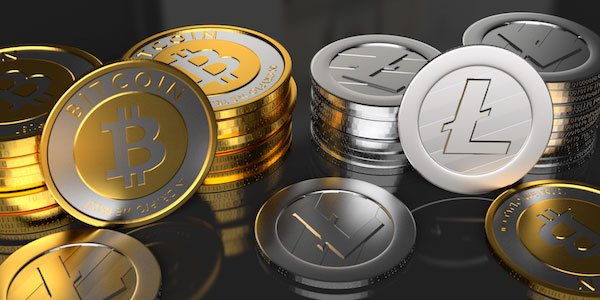What Is Litecoin, and Why Is It Beating Bitcoin This Year?

With digital currency Bitcoin taking the spotlight in 2017, it’s hard to remember the other cryptocurrencies that have been growing in its shadow.
An increasingly-prominent example: Litecoin. The fourth largest digital currency by market capitalization has gone positively vertical this year, with Litecoin prices breaching $320 for the first time Tuesday. Since the start of 2017, Litecoin has risen 7,291% against bitcoin’s 1,731%.
So why the rise? There doesn’t seem to be a single event—though the recent surge in interest surrounding cryptocurrencies may have pushed some investors into becoming more adventurous. Some investors may also think the price of bitcoin is overdone—and are seeking other investment opportunities. Meanwhile, Litecoin only became somewhat easier to purchase earlier this year, with Coinbase adding the cryptocurrency to its listing.
What is Litecoin?
One of the several clone cryptocurrencies that stemmed from Bitcoin, Litecoin “forked” off the Bitcoin ledger in late 2011. It was intended to be the silver to Bitcoin’s gold: a faster, more lightweight version of the Satoshi Nakamoto-created cryptocurrency. Instead of the approximately 10 minutes it takes for a Bitcoin transaction, a Litecoin transaction only takes 2.5 minutes.
While making transactions four times faster, Litecoin’s creator also Charlie Lee quadrupled the maximum number of coins that can be mined. While bitcoin has a total of 21 million, Litecoin totals 84 million. And the total market value of Litecoin is currently lower: $18 billion to Bitcoin’s $291 billion. It is the fourth largest cryptocurrency market behind Bitcoin, Ethereum, and Bitcoin cash.
The higher number of Litecoins, meanwhile, could make it psychologically more attractive to buy small-ticket items using the cryptocurrency.
“The vision is always I wanted Litecoin to complement bitcoin—not compete,” Lee said at a March Coinbase talk. “Bitcoin can be used for like moving millions of dollars between banks, buying houses, buying cars. It’s really secure… Litecoin can be used for cheaper things.”
Still, Lee has kept Litecoin simple and similar in technical ways to Bitcoin so that the cryptocurrency could “merge in” Bitcoin bug fixes with minimal effort.
Bitcoin has Satoshi Nakamoto. Litecoin on the other hand…
Has a former Google engineer.
Lee, a less shadowy figure than the pseudonymous Nakamoto, first got involved in Bitcoin in 2011. Not long after, he launched Litecoin, though not with the intention of actually creating an alternative cryptocurrency at first.
“It was an excuse to kind of learn the Bitcoin code,” he said during a March Coinbase talk. “I decided that I can actually create an altcoin that’s better than what’s out there. and lastly it was fun to play around with what’s out there.”
He got serious about Litecoin earlier this year, when he announced via Twitter plans to leave cryptocurrency exchange Coinbase during the summer.
While Nakamoto is no longer vocal about Bitcoin, leading current supporters to interpret his seminal white paper, those with questions about Litecoin need only ask Lee about his vision of cryptocurrency.
So why wasn’t it a failure like so many other early altcoins?
Unlike many other altcoins, when it first started, Litecoin was not too far behind Bitcoin. It first surpassed $1 billion in November 2013—about 8 months after Bitcoin.
One reason why Litecoin supporters didn’t ditch the nascent coin for Bitcoin is the different mining process, requiring hardware that is more widely available. While Bitcoin mining uses the SHA-256 hashing algorithm, which requires ASIC microchip technology, Litecoin uses the Scrypt algorithm. Because Scrypt requires a larger working memory, most ASICs makers have been barred from developing a suitable technology. Instead, Litecoin is often mined on graphics cards or GPUs.
But companies such as Zeus and Flower Technology are beginning to bring ASICs aimed at Scrypt to the market.
It's very interesting how it actually started, just as a fun experiment to learn something new. There are so many possibilities to learn and experiment nowadays, we should never allow our brains to fall into mindless indifference.
Lee just loves to experiment so it actually worked very well !
Hi! I am a robot. I just upvoted you! I found similar content that readers might be interested in:
https://newslibre.com/business/litecoin-vs-bitcoin-the-battle-of-digital-currencies/